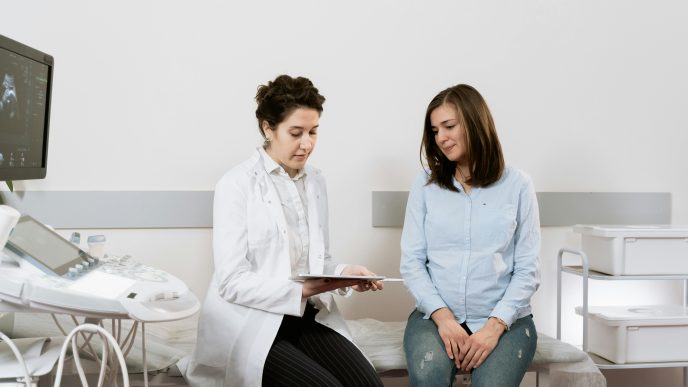PMR is a specific inflammatory disease, not “just muscle aches.” Most people improve quickly with the right steroid plan and careful taper. Labs are usually high but can be normal for a small group. Exercise helps when done safely. Some patients need steroid-sparing medicines.
Myth 1: “PMR is a muscle disease.”
Fact: PMR pain and stiffness come from inflammation in the tissues around joints (bursae, tendon sheaths), especially at the shoulders and hips—not from muscle injury. Ultrasound/MRI often show subacromial-subdeltoid bursitis and other peri-articular inflammation.
Myth 2: “If ESR/CRP are normal, it can’t be PMR.”
Fact: Most people have elevated ESR and/or CRP, but a minority have normal values at diagnosis. Studies report approximately 1–2% with both normal, and 7–22% with normal ESR (CRP may still be high). Doctors use your story, exam, imaging, and response to treatment together.
Myth 3: “Steroids are forever.”
Fact: Many people taper off steroids within 1–2 years; some need longer or a tiny maintenance dose, but lifelong high-dose steroids are not the goal. Tapering too fast increases relapse risk, so plans are individualized and follow guideline principles.
Myth 4: “Exercise makes PMR worse. Rest until it’s gone.”
Fact: Gentle movement and physiotherapy usually help stiffness and function. The aim is the right balance: avoid overdoing it, but don’t be inactive. Walking, range-of-motion, and light strength work are commonly recommended.
Myth 5: “PMR only affects the shoulders.”
Fact: The hips/thighs are often involved, and people can feel unwell (fatigue, low appetite). Morning stiffness ≥45 minutes is a key feature doctors look for.
Myth 6: “Ultrasound isn’t useful.”
Fact: Ultrasound of the shoulders/hips can support the diagnosis when the story fits, especially by showing bilateral subacromial-subdeltoid bursitis; it can also help distinguish PMR from rotator cuff disease. Newer studies keep refining its accuracy.
Myth 7: “There are no options if steroids cause side effects.”
Fact: Methotrexate can help some people lower steroid exposure. For those who can’t taper or relapse often, the IL-6 blocker sarilumab (Kevzara®) is FDA-approved for PMR. Decisions are personalized by your clinician.
Myth 8: “PMR and GCA are totally separate.”
Fact: They are closely linked. A portion of people with PMR develop giant cell arteritis (GCA), and about half of people with GCA have PMR-type aches. Know the GCA red flags (new headache, scalp tenderness, jaw pain while chewing, any vision change) and seek same-day care if these appear.
What to do with this information
- Work with your clinician on a taper that fits your body and life.
- Keep a symptom diary (morning stiffness minutes + pain scores).
- Move daily — short walks and shoulder/hip routines are safe starting points.
- Learn the GCA red flags and act fast if they show up.












